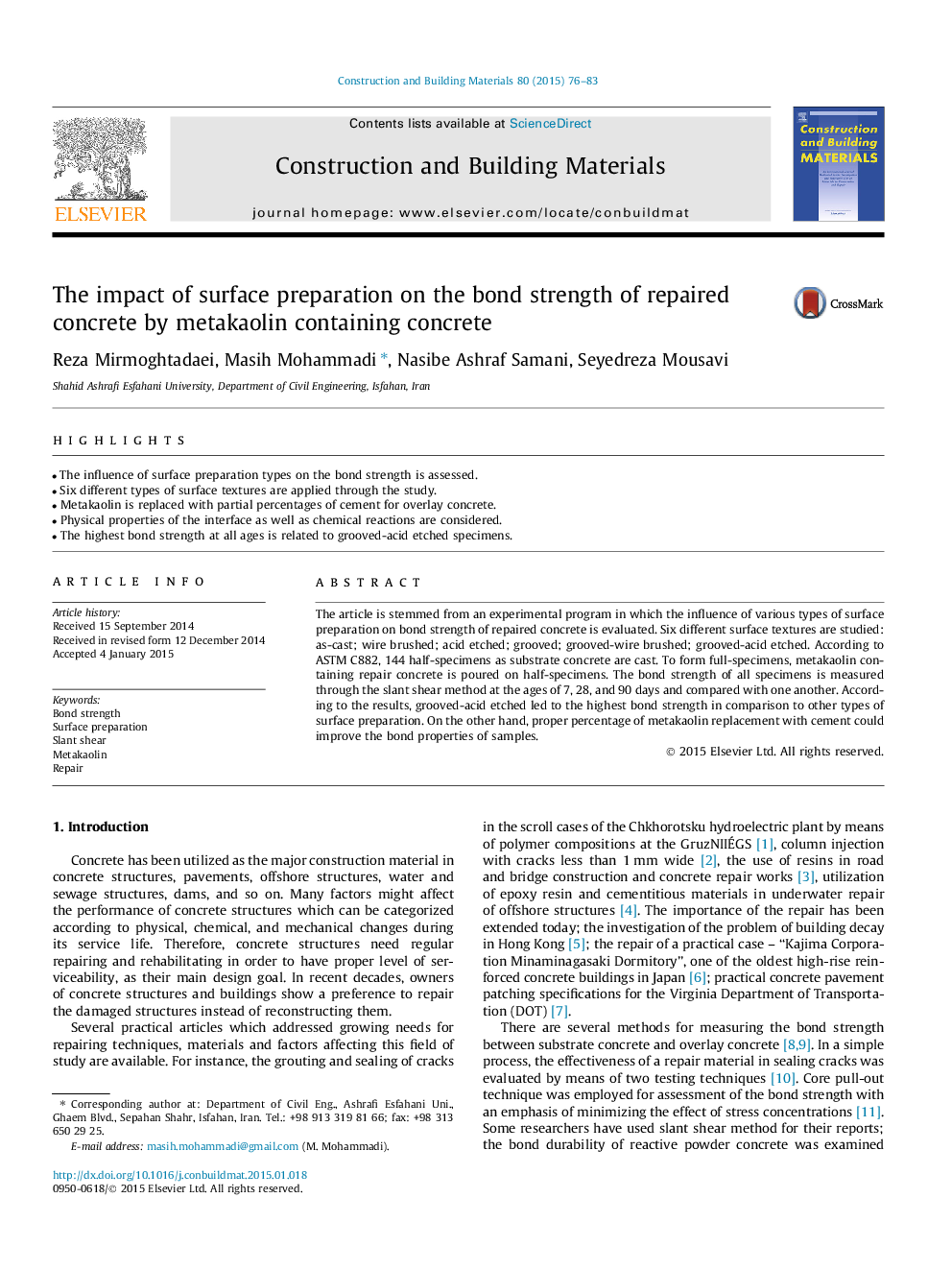| Article ID | Journal | Published Year | Pages | File Type |
|---|---|---|---|---|
| 6721215 | Construction and Building Materials | 2015 | 8 Pages |
Abstract
The article is stemmed from an experimental program in which the influence of various types of surface preparation on bond strength of repaired concrete is evaluated. Six different surface textures are studied: as-cast; wire brushed; acid etched; grooved; grooved-wire brushed; grooved-acid etched. According to ASTM C882, 144 half-specimens as substrate concrete are cast. To form full-specimens, metakaolin containing repair concrete is poured on half-specimens. The bond strength of all specimens is measured through the slant shear method at the ages of 7, 28, and 90Â days and compared with one another. According to the results, grooved-acid etched led to the highest bond strength in comparison to other types of surface preparation. On the other hand, proper percentage of metakaolin replacement with cement could improve the bond properties of samples.
Related Topics
Physical Sciences and Engineering
Engineering
Civil and Structural Engineering
Authors
Reza Mirmoghtadaei, Masih Mohammadi, Nasibe Ashraf Samani, Seyedreza Mousavi,
